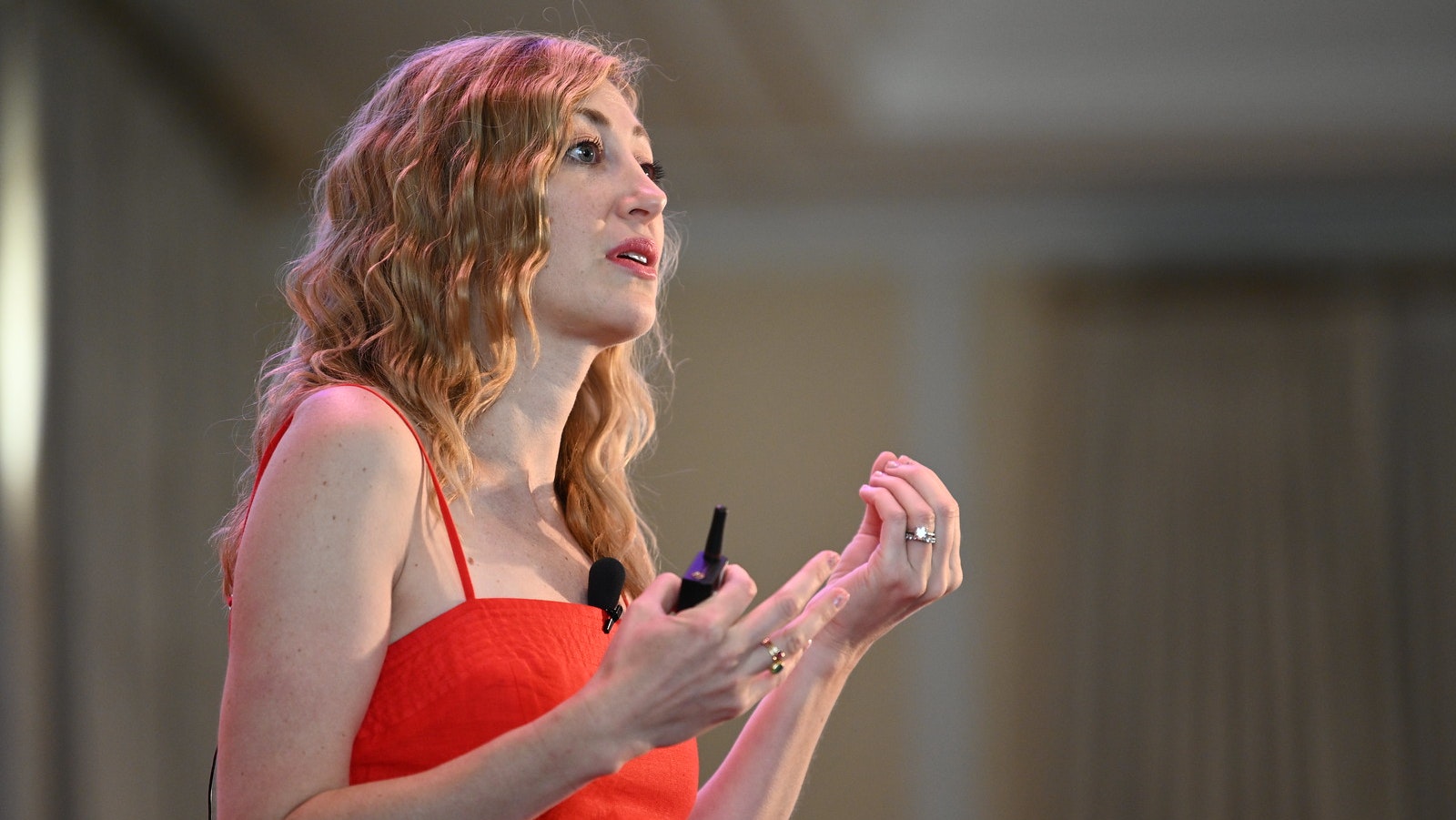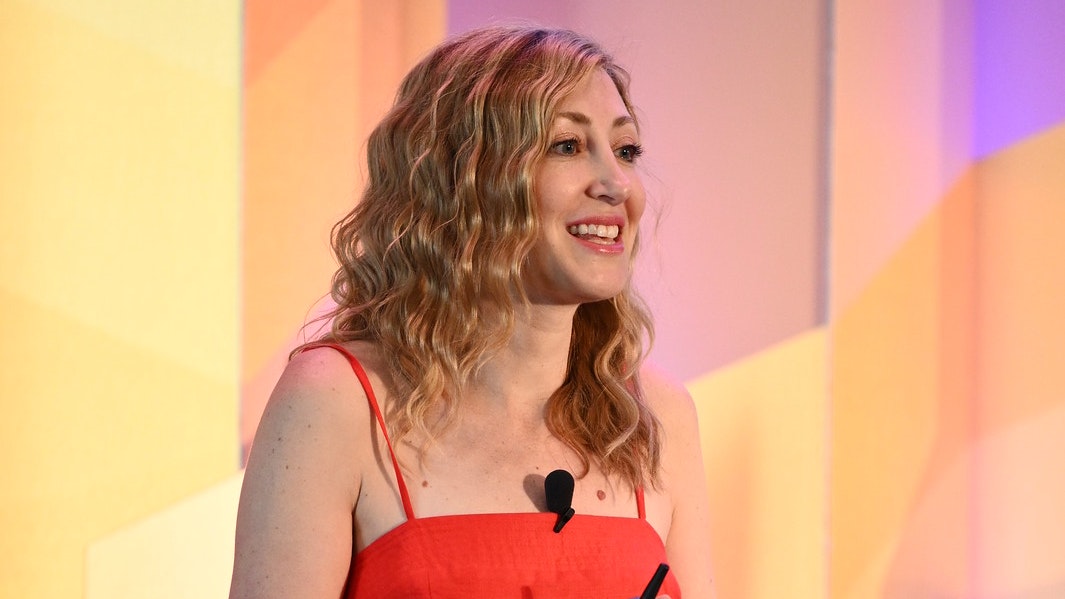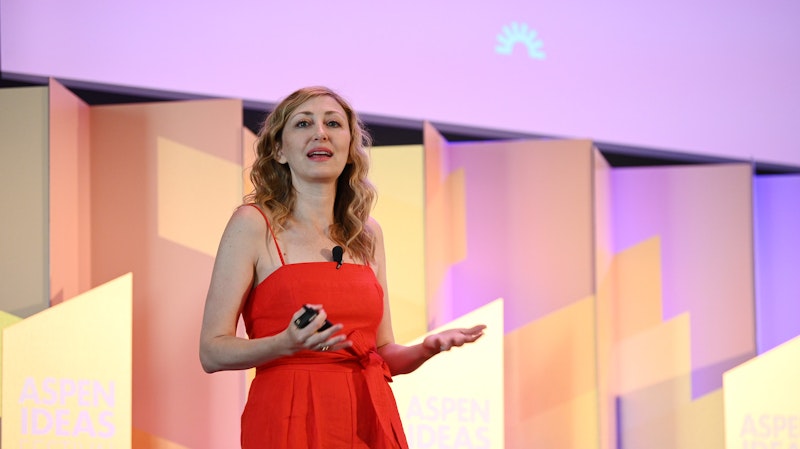
The Surprising Power of Joy

As a culture we are obsessed with the pursuit of happiness, and in the process, we forget about joy.
Full Session

Featured Highlights
Setup
We're often taught that our surroundings are incidental to our well-being, but an emerging body of research shows that the physical world can be a powerful tool for cultivating happier, healthier lives. Studies show that workers in colorful offices are more alert, friendly, and confident than those in drab ones, that windows can speed healing, and children progress faster in classrooms with better lighting. Join Ingrid Fetell Lee, author of "Joyful: The Surprising Power of Ordinary Things to Create Extraordinary Happiness," as she shares how simple changes to the world around us can improve our health, stimulate creativity, facilitate social harmony, and of course, promote joy. Underwritten by Sotheby's.
Happiness versus joy
Happiness and joy are often used interchangeably, but they’re actually two very different things. Happiness is a broad evaluation of how we feel about our lives over time, says designer Ingrid Fetell Lee, and the varying degrees of happiness — the ups and downs — make happiness hard to measure. Sometimes, we're not always sure just how happy we are. But joy is much simpler and more immediate, she explains; it’s “an intense momentary experience of positive emotion.” It’s observable in direct physical expressions like smiling, laughter, and a feeling of wanting to jump up and down.
Big IdeaIf I asked you what anxiety feels like in your body, you could probably tell me instantly. But we forget that joy has a feeling too.Ingrid Fetell Lee
Joy carries a plethora of positive impacts. Research shows that joy helps us be up to 12 percent more productive. It increases our cognitive flexibility and strengthens our relationships. “We live in this state of burnout," says Lee, “but if we make room for small moments for joy, they can help us be more resilient over the long haul.”
Swimming pools and rainbows — what gives you joy?
As a designer, Ingrid Fetell Lee wanted to understand the physical elements of joy. She found that things like cherry blossoms, bubbles, swimming pools, treehouses, rainbows, and rainbow sprinkles are universally joyful. The patterns she noticed became categories to organize the type of joy certain things elicit. Lee explains these different aesthetics of joy:
Big IdeaWe live in a world that is so sharply divided and polarized that sometimes it can feel like our differences are so stark as to be insurmountable. To me, there’s something really powerful in the idea that we all find joy in some of the same things. That underneath it all, there’s this part of us that has this silly attraction to things like googly eyes and rainbows.Ingrid Fetell Lee
Growing up doesn't have to mean giving up joy
We all start out joyful, says Ingrid Fetell Lee. “But as we get older, being colorful or exuberant opens us up to judgment,” and we worry about “being dismissed as childish or superficial or frivolous or self-indulgent.” Give yourself permission to do what feels joyful to you, Lee says, and ask yourself, what is something I loved to do when I was younger that I stopped doing, for some reason?
Did You Know?
“We often see joy as a distraction from success, something that we put off to our nights and our weekends because it doesn’t belong in the workplace, when in fact joy can be a catalyst for our success,” says Lee. Though it can be tempting to postpone joy during stressful times at work, it is ultimately one of our best tools to restore well-being.
Superficial changes, profound transformation
“We have a massive untapped opportunity to use our spaces in ways that can help people thrive,” argues Ingrid Fetell Lee. The lack of joyful design is most extreme in the places that house the people who are most vulnerable in our society, she says — places like schools, hospitals, nursing homes, and jails. Lee discusses a city in Albania and a youth development program in New York CIty that are making radical changes to their communities through simple pops of color:
Big IdeaWhen we say that color is a luxury and housing projects shouldn’t have that because they should only have the bare minimum, and when we say that people in poverty don’t deserve small joys in their day-to-day lives, it’s inherently dehumanizing.Ingrid Fetell Lee
Our physical surroundings can help us cultivate happier and healthier lives, both individually and socially — but at the same time they can be used to further marginalize people who are vulnerable. “This is an emerging public health issue and public health opportunity,” says Lee, and one that deserves attention.
How can we be more joyful? Try joyspotting.
A simple way to be more attuned to joy is what Ingrid Fetell Lee calls joyspotting, or noticing all the tiny joyful things in the environment immediately around us. For more joyful relationships, Lee emphasizes the importance of sharing joy and celebrating our partner’s joy with them. In designing living and working spaces, she suggests “joy is a palette we can work with” for “finding the right aesthetics for the right environment.”
Big IdeaThe first moment of genuine joy is the moment of commitment to the human experience. Joy is what makes us human. When we deny that, when we push joy off to the margins, when we say it’s extraneous, or it’s a luxury, we lose a piece of our humanity.Ingrid Fetell Lee
Joy is often the first thing to go when we’re stressed or experiencing a crisis. “If you feel yourself entering a mode of chronic stress, where it’s relentless, it’s very easy to dig in and say, I just have to get to the other side,” Lee points out. “That’s a good trigger to say, I should do some small and joyful thing now.”
Learn More
Additional Information
Resources
The Aesthetics of Joy
5 Simple Tips to Find Joy Every Day
Joyful: The Surprising Power of Ordinary Things to Create Extraordinary Happiness
Joy is a Form of Resilience
Explore More
Society


The quest for work-life balance is never ending for many of us. The advice in this talk from the 2023 Aspen Ideas Festival still holds a lot of relevance, so we’re bringing it...

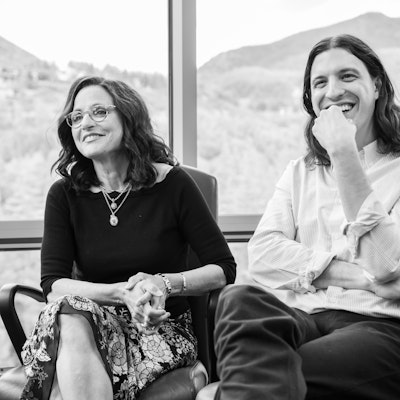
Julia Louis-Dreyfus has kept us laughing for years in her roles as Elaine Benes in “Seinfeld” and Selina Meyer in “Veep.” But her most recent work has her shifting from comedy...


Living as a trans person in America comes with its share of challenges, which are sometimes even life-threatening. But some say it can also open up access to incredible freedo...


It’s a tough time to try and express the complexity of life honestly. Writer Chimamanda Ngozi Adichie doesn’t shy away from truth-telling and believes we should all step up an...

Global conflicts and health crises have put into stark relief deeply-ingrained gender roles in society. Yet the past years have also seen record-high numbers of women running...


Creativity is as intrinsic to our species as any of our basic instincts, says Debbie Millman, designer and curator. But for millions of people in the United States, the abilit...


The entertainment industry has had to pivot and refresh time and again to adapt to constant changes in format, business models and attention spans. Somehow, producer Brian Gra...

The people in our lives shape who we are. But great relationships don’t just happen — they take care, intention, and ongoing effort. How do you know when to let go, adjust exp...


Advances in medicine and healthy living mean that more and more people will live to be 100. But just because their bodies can last doesn’t mean their bank accounts will keep u...


In the early days of cable television, there wasn’t a single network aimed at Black audiences. Sheila Johnson and her husband at the time saw an opening, and put all their hop...


Owning a professional sports team is not for the faint of heart. Results are volatile and wins and losses come with the strong emotions of a city’s fan base. But it’s a sound...

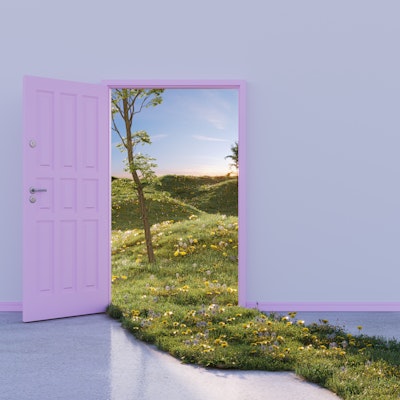
Looking around and experiencing the suffering and injustice in the world can make it difficult to believe that happiness exists. But the Judeo-Christian tradition teaches that...


Millions of children across America don’t have art classes in school and don’t grow up going to art museums and galleries. They might be hours away from the closest museum, or...


This episode is from the 2022 Aspen Ideas Festival, but we’re bringing it back because it’s still as relevant as ever. Though it can sometimes feel like conflict and discord i...


Sir Ken Robinson believed that as a society, we tragically underestimate and underutilize human ability. We create linear systems for our minds modeled on industry and manufac...


Young people in America are struggling. The causes are varied and may not be entirely clear, but the results are unfortunately unmistakable. Many of our youth feel lonely, iso...

October is National Book Month, and we’re celebrating by looking back at some of our favorite conversations about reading and writing from the Aspen Ideas Festival and Aspen I...

New York Times columnist and bestselling author David Brooks is known for bringing his thoughtful reflections on politics and culture, but at this year’s Aspen Ideas Festival,...

Jump in by watching our 15 most popular talks of all time. From black holes to jazz and civil rights to psychology hacks, we've collected the talks that remain audience favori...

Finding the national and global headlines understandably bleak lately? Whether you need mental distraction or stimulation, engross yourself in compelling topics and get a gli...






